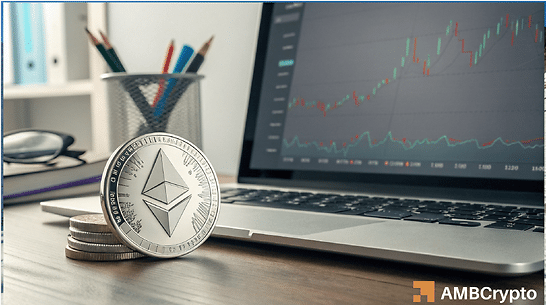“We remain underweight on India in a relative context, says Gautam Chhaochharia, Head of Global Markets at UBS Securities, given the rich valuations and weak earnings. Markets have come off but are still up meaningfully from a year back, he says. Here are edited excerpts of the interview:
The US markets have run-up significantly in the past two years. What is the outlook for the coming year? How will rising bond yields impact equities?
Our global equity strategist has upgraded US to benchmark weight. US is the place to be when global growth slows to less than 3.5 per cent as it has the lowest operational leverage, most flexible labour market and a dual mandated Fed.
US forecast 2.9 per cent global GDP in 2025. Trump will back tax cuts, de-regulation and a policy to disproportionately help America versus its peers. However, a lot of Trump ‘hope’ maybe arguably priced in; all forms of valuations are at new highs relative to global markets; US growth is forecast to slow to 1.9 per cent in 2025 from 2.7 per cent yoy in Q3 while European and Japanese growth may modestly accelerate.
How will the Trump win impact trade between countries and the geopolitical environment?
We expect global growth to slow by over a half percentage point over the next two years (from 3.2 per cent to 2.6 per cent).
That is partly because we don’t think the US can continue to grow at this pace and mainly because of the damage we expect US tariffs to inflict on an already weak Chinese economy. India should be relatively one of the least impacted but not completely unaffected, especially via global growth impact.
Where do you see opportunities within emerging markets amid the current economic uncertainty?
Slowing global growth, risks of global tariffs/trade wars and other US policy risks, and prospects of a stronger dollar are all headwinds to EM relative performance to the US.
It is hard to argue EM valuations are cheap when multiples are close to pre-COVID peaks – and there are clear risks of US yields staying higher for longer and spreads widening. Our global strategy team prefers US and Europe over EMs, while China remains a key overweight.
What is your outlook for Indian equities? How does the country compare to other emerging markets?
Oue EM/APAC strategist remains Underweight on India in a relative context. Markets have come off but are still up meaningfully from a year back. The key to the market correction has been weak earnings more than anything else.
This is especially in context of rich valuations. Markets were anticipating a weak 2Q earnings season but the actual numbers turned out to be worse than these weak expectations with estimates being cut further, almost broadly across sectors.
It is hard to separate out the impact of elections in the early part of the 2024 from other drivers of this quarter’s weakness. However we do note that the slowdown in reported topline growth for India stocks has been ongoing for more than three quarters.
We also highlight that nominal GDP growth — that arguably matters more for stocks than real growth — is trending in the bottom quartile of the past 15 years. However, India remains a stand out in terms of long-term growth potential and investors still see attractive bottom-up opportunities in India.
India stocks appear pricey, with price-to-earning ratio much higher than its emerging-market counterparts. What is your take on valuations at this point in time for Indian equities, especially after the correction we saw in October?
India has always traded at a premium to EM but this time it is much higher. It reflects higher hopes around relative long-term growth and also strong local flows supporting the market. Post October correction, there were signals of bottoming out in terms of foreign flows as well as investors again looking for bottom up ideas.
I wont be worried about valuations in isolation currently – policy trajectory and growth ahead will possibly matter more. These include policy in terms of rates and liquidity stance, as well as fiscal spending. Of course, reforms agenda will be key as that will help sustain the long term comfort on India’s growth.
India saw FPI outflows of over Rs 1 lakh crore in October. What is the outlook for FPI flows going forward, especially given the Trump win and the Fed’s interest rate cuts?
India is better positioned amongst EMs in context of impact from US policy landscape, though may be also reflected in valuations as markets have been anticipating the outcome. Many investors in the market mention record FPI outflows till a couple of weeks back.
However, let’s not look at these numbers just in absolute terms but also in terms of percentage of market cap or percentage of their holdings. In these terms the selling is not off the charts.
Earnings growth for Indian companies in the second quarter have been sluggish so far, with the biggest earnings downgrades seen since early 2020. How worried should we be and how will it impact the markets going forward?
FY25 being a weak earnings year is now well understood and is arguably priced in. Though recent disappointment did cause some nervousness.
The key remains outlook beyond that. Policy stance by both RBI and government, a bigger push to reforms agenda and finally political economy post upcoming state elections – that’s what will drive that outlook for earnings growth.
As of now markets seem to have some comfort around earnings recovery ahead and there are data points to support that. Our base case is for earnings growth to recover back in FY26.
Any sectors that you are bullish on?
Given recent market correction and growth concerns, we think this is now much more a stock specific market rather than taking big sector level thematic view. Our Strategist prefer defensive exposures like consumer staples and IT services and is wary of leveraged consumption (discretionary), and would be selective in banks and industrials.
China has come back into the limelight recently after seeing renewed interest from overseas investors amid the stimulus measures announced by its government. Is this a temporary phenomenon or do you think the “Buy China” trade has legs to go on?
China remains a key overweight for our EM strategist. Despite continued macro weakness, fundamentals of companies in MSCI China remain intact, with stocks supported by dividends and buybacks.
We keep a close eye on more policy stimulus especially in the wake of potential 60% tariff risk from the US – but acknowledge that monetary policy itself can drive a meaningful uplift to China stocks. Valuations remain inexpensive.
Published on December 17, 2024









Leave a Comment